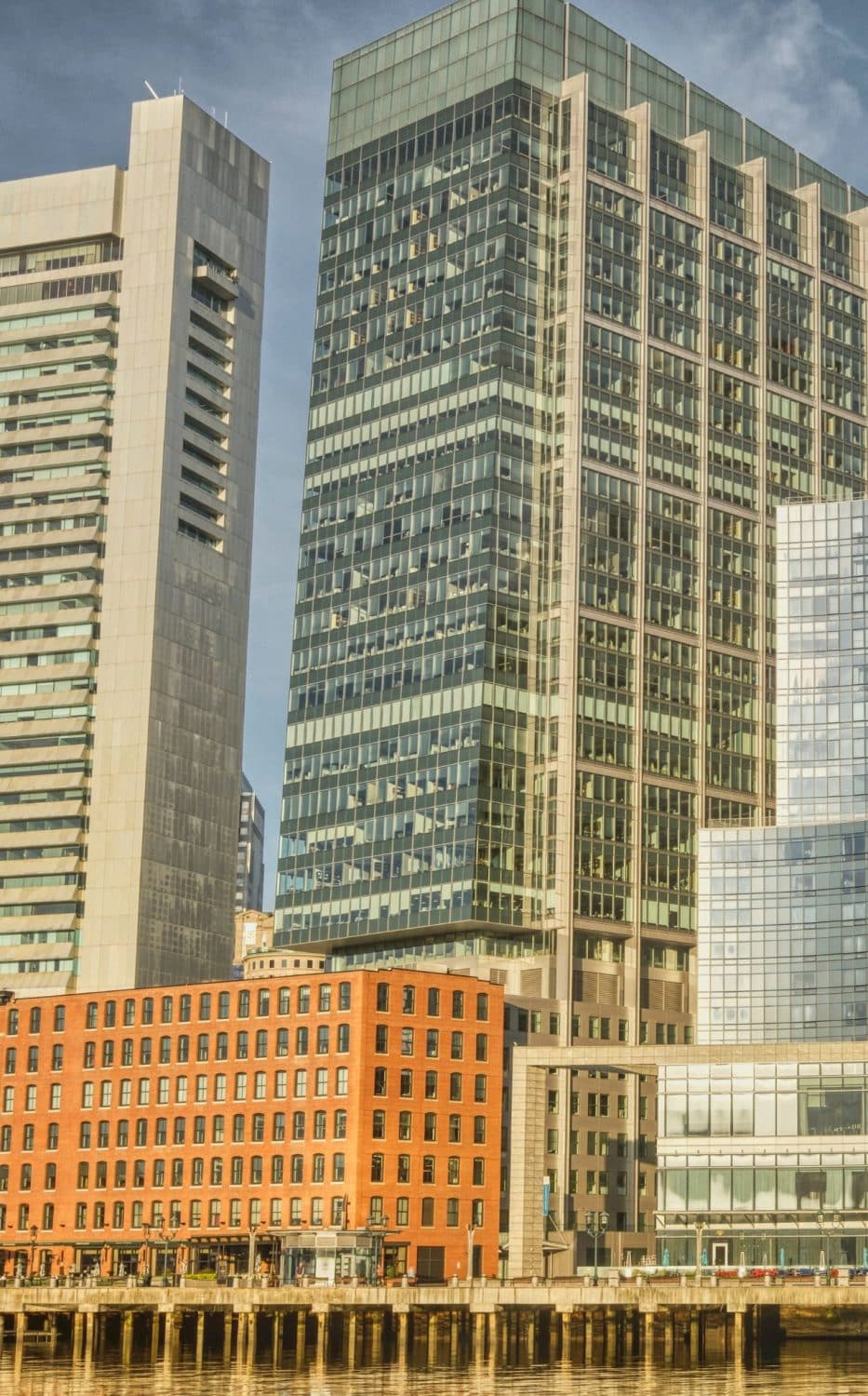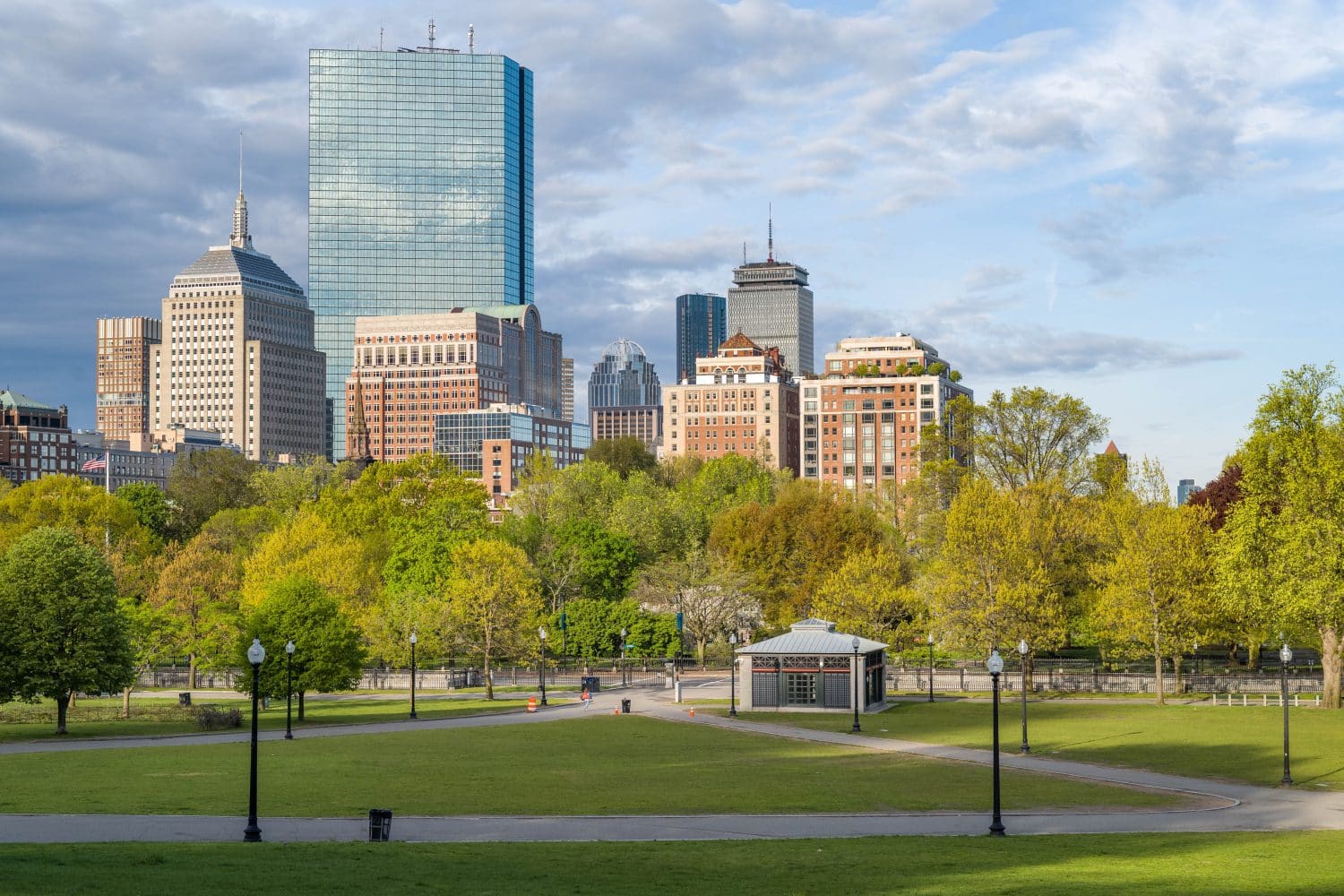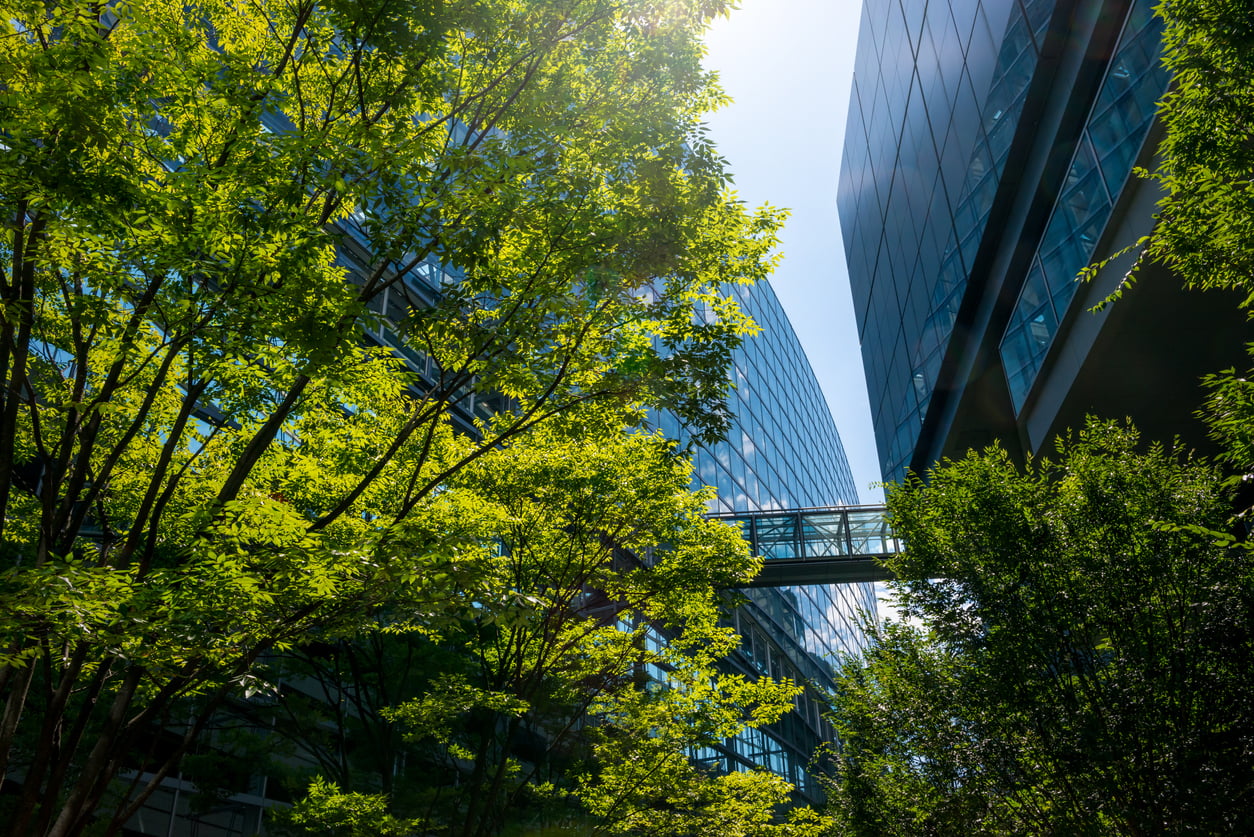According to the City of Boston, “Buildings account for nearly 70% of greenhouse gas emissions in Boston.”
That’s why the city introduced the Building Emissions Reduction and Disclosure Ordinance (BERDO). This regulation requires large buildings in Boston to reduce their emissions, with a larger goal of achieving net zero emissions by 2050.
While reporting requirements have already begun, there are future phases and regulations being discussed — all of which have strict fines and penalties when not met. To help you stay on top of the latest BERDO requirements updates, we’re breaking down the basics of what you need to know about BERDO.
Continue reading our BERDO summary to better understand how these regulations will impact your business.
BERDO summary
BERDO 1.0 was initially enacted in 2013 in response to the Boston Climate Action Plan. This first rendition of the law was primarily a reporting and disclosure ordinance on greenhouse gas (GHG) and energy use. However, the city saw the need to expand past reporting and disclosure if they wanted significant GHG reductions.
Fast forward to September 2021, BERDO 2.0 was passed to introduce emission performance standards, measured in metric tons of carbon dioxide equivalent per square foot. This new legislation covers the same buildings in 1.0, but now also includes smaller buildings.
BERDO 2.0 requires all qualified buildings to achieve net zero emissions by 2050, with benchmarked goals set in five-year adjusted intervals, starting in 2025. .
It affects the following covered buildings (list found here):
- Non-residential buildings that are 20,000 square feet or larger
- Residential buildings that have 15 units or more
- Any parcel with multiple buildings that sum to at least 20,000 square feet or 15 units
Phases: 1, 2, and 3:
While the finalized regulations are still being developed, it’s important to have an idea of what will be coming your way in the future months once the regulations are approved.
Phase 1 was approved by the Air Pollution Control Commission in March 2022, enabling reporting and verification policies and procedures. Starting in June this year, initial reporting deadlines were due on the 15th, and must be submitted annually by May 15th each year moving forward. Additional regulations are still being developed.
Phase 2 will focus primarily on the establishment of the Review Board. This will be made up of nine members that are appointed by the Mayor and they will propose new regulations and oversee enforcement action. It’s rumored to be completed by winter of 2023, but stay tuned for more updates.
Phase 3 will begin later in 2022 and will focus on:
- Compliance with emission standard
- Hardship compliance plans
- Individual compliance schedules
- Equitable emissions investment funds
- Additional regulations, as needed
At the time of publishing this post, BERDO is currently active in Phase 1, meaning that reporting and verification are required. Let’s take a deeper dive into what is currently required.

Requirements, reporting, and penalties:
Requirements
It’s no secret that the city is making large strides in decarbonization. And this table shows the required emissions standards that must be met each year, with it varying depending on the building type.
Beginning 2025, buildings over 35,000 square feet must have emissions less than or equal to the limits in the table.
Buildings between 20,000 and 35,000 GSF will have to comply with these emissions beginning in 2030.
Reporting
Boston buildings over 20,000 square feet were required to begin reporting on their water and energy use this year, with reports due on June 15th unless owners requested a six-month extension.
There are three main parts to reporting:
- Energy Star Portfolio Manager — which reports key building characteristics, energy, and water usage.
- BERDO Reporting Form — this provides property and contact information, renewable energy, energy use exempt from emissions requirements, additional optional reporting, and follow up
- Third-Party Data Verification — which must be completed by a qualified energy professional (found on page 24). They’ll verify in 2022 then only will need to do so again in 2026, 2030, 2035, 2040, 2045, and 2050. For example, reporting information for 2022-2025 will be verified in 2026.
Beginning in 2023, and each year moving forward, these reports will be due by May 15th.
Penalties
While each penalty varies depending on the building size and which area the building failed to comply, the city is implementing intense fines within two building groups:

First Group
Qualifications
- Non-residential buildings greater than or equal to 35,000 gross square feet or 2 or more buildings on the same parcel that equal or exceed 100,000 gross square feet
- Residential buildings greater than or equal to 35 units or 35,000 gross square feet
Fines
- For this first group, failure to comply with reporting requirements is a $300 fine for each day that the Building Owner is out of compliance.
- Failure to comply with emission standards is a $1000 fine each day of the calendar year and each subsequent day when the violation is not corrected.
Second Group
Qualifications

- Non-residential buildings greater than or equal to 20,000 gross square feet but less than 35,000.
- Residential buildings greater than or equal to 15 units or 20,000 gross square feet, but less than 35 units or 35,000 gross square feet.
Fines
- For this second group, failure to comply with reporting requirements is a $150 fine for each day the Building Owner is out of compliance.
- Failure to comply with emission standards is a $300 fine each day of the calendar year and each subsequent day when the violation is not corrected.
For both groups, failure to accurately report information is subject to a $1,000-$5,000 fine. The Review Board will determine the fine – whether the failure to accurately report information impacted a determination of compliance with emissions standards.
Note: No penalty shall be assessed prior to 30 days after receipt of notice of violation by a building owner or if a building owner corrects the violation within 30 days of receipt of a notice of violation.
Decarbonizing starts now
It is imperative that you are making strides towards decarbonizing your portfolio since reporting requirements began this year.
Additionally, your decarbonization journey takes time to find what’s the most efficient way for you to begin implementing various methods. If you haven’t started yet, you are risking time and money being wasted — both in your building’s emission plan and the various penalties and fines that are in place.
With only three short years to make significant strides towards your decarbonization journey, it’s imperative that you begin making changes today.
Are you unsure how to get started on your decarbonization journey or want to begin using the fastest, lowest cost path to decarbonization? Receive a custom decarbonization plan by filling out the form below.







